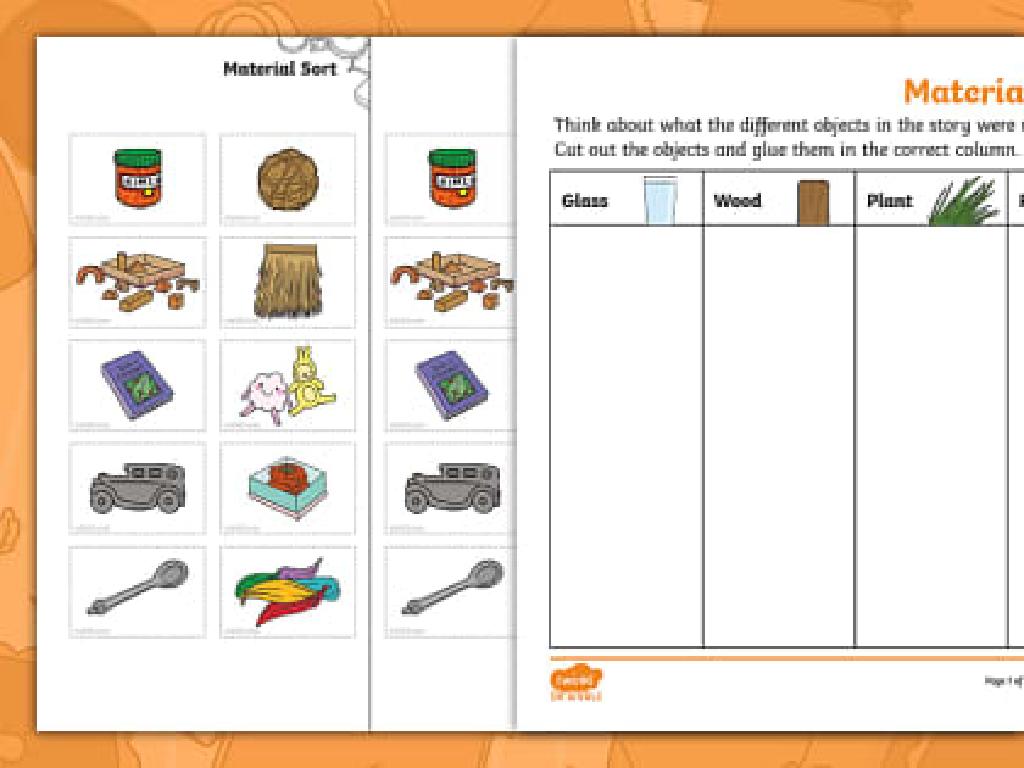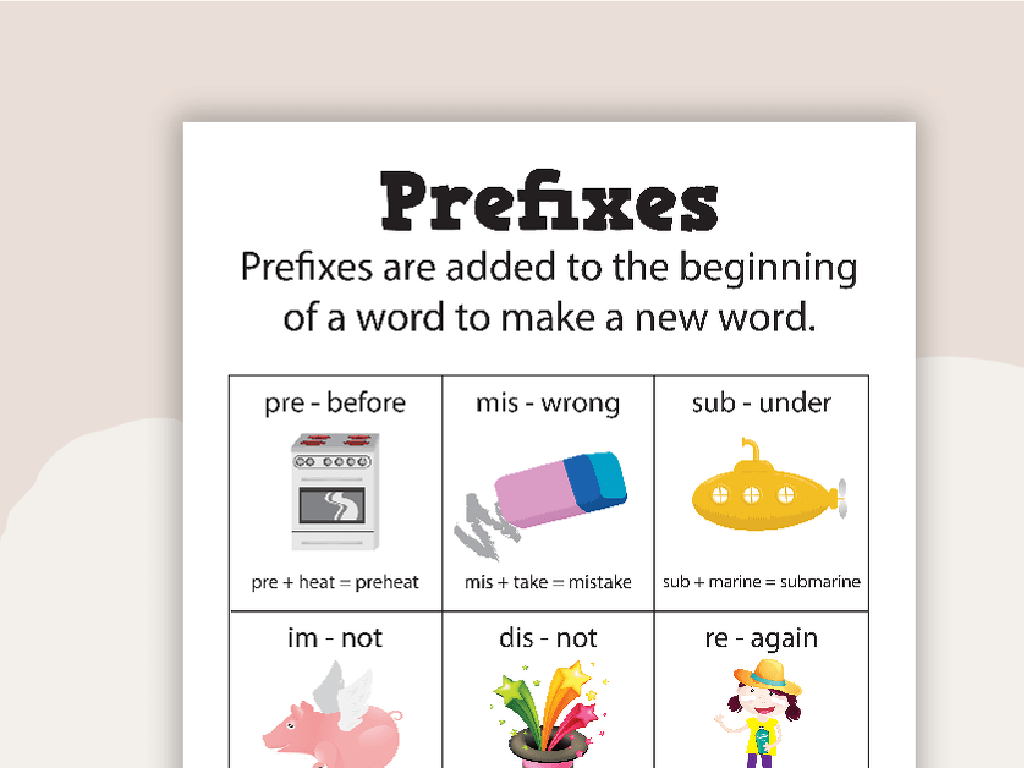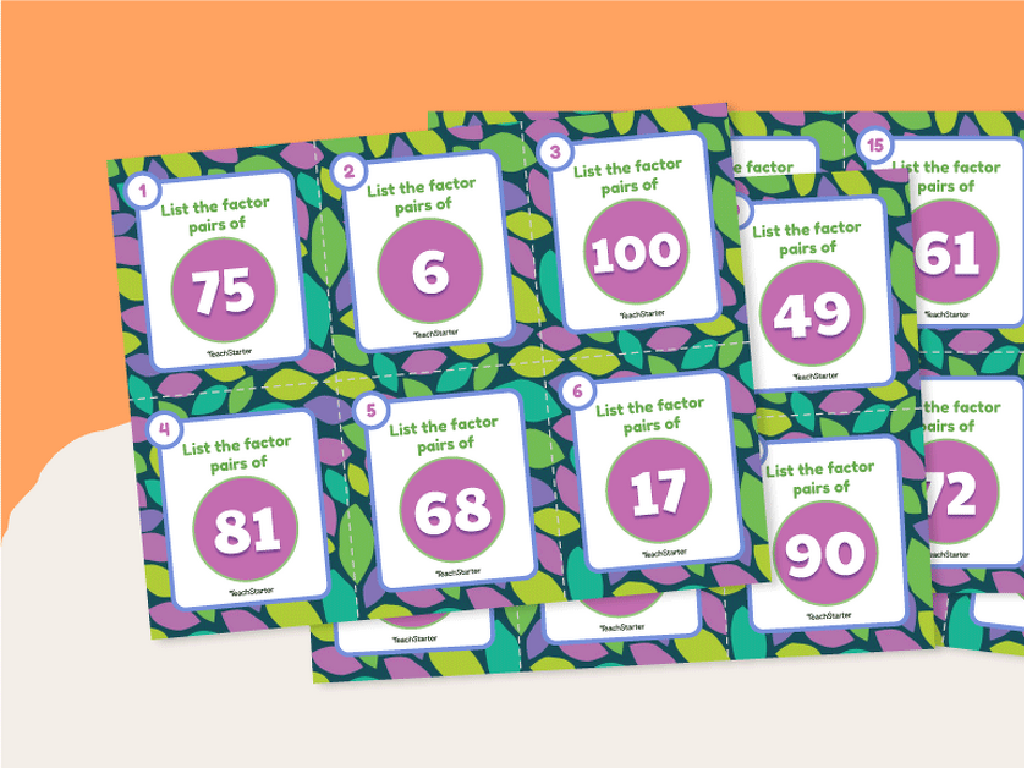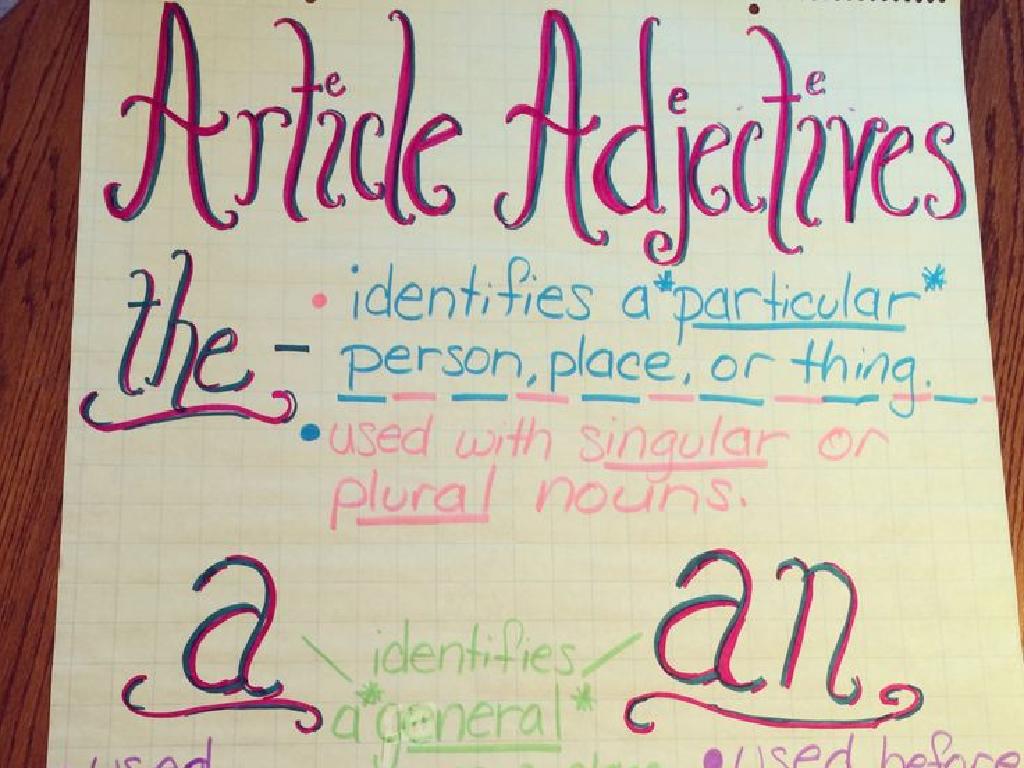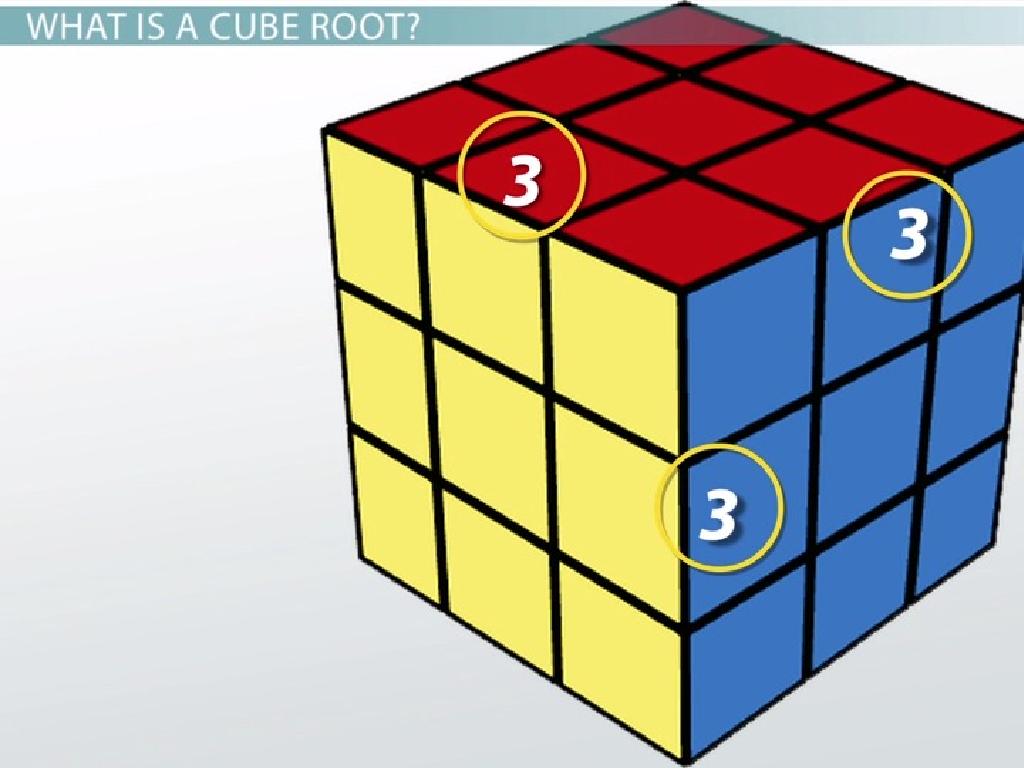Choose Metric Units Of Distance, Mass, And Volume
Subject: Science
Grade: Sixth grade
Topic: Units And Measurement
Please LOG IN to download the presentation. Access is available to registered users only.
View More Content
Introduction to Units and Measurement
– Understanding measurement units
– Units are standards for measuring quantities.
– Importance of accurate measurement
– Accurate measurements are crucial for experiments and results.
– Overview of the Metric System
– A decimal system of measurement used globally in science.
– Metric units: meter, gram, liter
– Distance is meter (m), mass is gram (g), volume is liter (L).
|
This slide introduces the concept of measurement and its significance in scientific inquiry. Students will learn that units of measurement provide a standard for quantifying physical quantities, which is essential for accuracy and consistency in science. Emphasize the importance of precision in measurements for reproducible and reliable results. The metric system is highlighted as the standard system used in science due to its universal acceptance and ease of use, based on multiples of ten. Familiarize students with the basic metric units for distance (meter), mass (gram), and volume (liter), which they will use throughout their scientific education. Encourage students to think of situations where they have used these units in real life to make the information more relatable.
Metric Units of Distance
– Meter (m) as the base unit
– The meter is the standard unit for measuring length in the metric system.
– Using a meter stick
– A meter stick is a tool used to measure objects up to one meter long.
– Converting: meters, cm, mm
– Understand how to change between meters (m), centimeters (cm), and millimeters (mm).
– Practice with real objects
– Measure items in the classroom to understand metric length.
|
This slide introduces students to the concept of measuring distance using the metric system, with the meter as the fundamental unit of length. Emphasize that a meter stick is a common tool for measuring lengths and can be used to measure objects up to one meter. Demonstrate how to read a meter stick, including the significance of the smaller divisions representing centimeters and millimeters. Provide examples of how to convert between these units, such as 1 m = 100 cm and 1 cm = 10 mm. Encourage students to bring items from home or use classroom objects to practice measuring and converting between units to reinforce their understanding.
Metric Units of Mass
– Gram (g): Basic unit of mass
– A gram is a small unit of mass, like a paperclip.
– Mass vs. Weight: What’s the difference?
– Mass is the amount of matter, weight is the force of gravity on it.
– Measuring mass with a scale
– Use a scale to find how heavy an object is in grams or kilograms.
– Converting grams to kilograms
– 1,000 grams make up 1 kilogram, so divide or multiply by 1,000.
|
This slide introduces students to the concept of mass in the metric system, starting with the gram as the basic unit. It’s crucial to clarify the difference between mass and weight, as mass remains constant regardless of location, while weight can change due to gravity. Demonstrate how to use a scale to measure the mass of objects in grams or kilograms. Finally, explain the conversion between grams and kilograms, ensuring students understand that there are 1,000 grams in a kilogram. Provide examples and practice problems for converting between these units to solidify their understanding.
Metric Units of Volume
– Liter (L) as volume unit
– Liter is used to measure volume, like water in a bottle.
– Use graduated cylinders
– Graduated cylinders measure liquid volumes accurately.
– Convert L to milliliters
– 1 Liter equals 1,000 milliliters. How many milliliters in 2.5L?
– Practice with real examples
– Fill a cylinder with water to learn how much a liter is.
|
This slide introduces students to the concept of measuring volume in the metric system, focusing on the liter as the basic unit. Emphasize that a liter is a common measurement for liquids, and can be visualized as a large bottle of soda. Show how to use a graduated cylinder, a tool that allows for precise measurement of liquids, and discuss the importance of reading the meniscus at eye level. Teach students the conversion between liters and milliliters, highlighting that there are 1,000 milliliters in a liter. Provide real-life examples or classroom activities where students measure out different volumes of liquid to reinforce the concept. Encourage students to think of other common items that might hold a liter of volume.
Choosing Appropriate Metric Units
– Understanding meters, grams, liters
– Meters measure length, grams measure mass, liters measure volume.
– Best units for everyday objects
– Use meters for a pencil’s length, grams for sugar’s weight, liters for water volume.
– Practice with metric units
– Solve problems: Choose right unit for a bike’s weight or a milk carton’s volume.
– Importance of correct units
|
This slide aims to help students understand when to use meters, grams, and liters, which are the basic metric units for measuring distance, mass, and volume respectively. Provide examples of everyday objects and what metric units would be appropriate for measuring them. For instance, meters would be used to measure the length of a room, grams to measure the weight of fruits, and liters to measure the amount of a beverage. Include practice problems where students must decide the most suitable metric unit for different scenarios, reinforcing their understanding of the application of these units in real life. Emphasize the importance of choosing the correct units to ensure accurate communication of measurements.
Metric Units in Real-World Applications
– Metric units in cooking
– Use grams and liters for ingredients
– Measurement in construction
– Meters and centimeters for dimensions
– Precision in science experiments
– Milliliters and grams for chemical quantities
– Understanding metric relevance
|
This slide aims to show students the practical applications of metric units in everyday life. In cooking, metric units like grams and liters are essential for following recipes accurately. In the field of building and construction, measurements in meters and centimeters are crucial for creating structures that are safe and stable. Science experiments often require precise measurements of substances, using milliliters for volume and grams for mass, to ensure the validity of results. Highlight the importance of understanding and choosing the correct metric units to apply them effectively in various scenarios. Encourage students to think of other areas where metric measurements are used and to discuss why accuracy is important.
Class Activity: Measure and Convert
– Measure classroom objects
– Record measurements
– Use rulers or measuring tapes for accuracy
– Convert between units
– Practice converting cm to m, g to kg, mL to L
– Share findings with class
|
This interactive activity is designed to help students apply their knowledge of metric units in a practical setting. Provide students with rulers, measuring tapes, and scales to measure various objects around the classroom. They should record these measurements in centimeters, grams, and milliliters. Then, guide them through the process of converting these measurements into meters, kilograms, and liters. Encourage accuracy and attention to detail. After the activity, have students share their findings with the class to reinforce their understanding of metric units and conversion. Possible objects to measure include desks, books, and small containers. This will also foster a collaborative learning environment.
Conclusion: Metric Units Mastery
– Recap: metric units of distance, mass, volume
– Meters for distance, grams for mass, liters for volume
– Importance of choosing the right unit
– Accurate measurement is crucial in science and daily life
– Engage in a Q&A session
– Review key concepts learned
– Reinforce understanding of when to use each unit
|
As we wrap up, let’s review the metric units for distance (meters), mass (grams), and volume (liters) and understand why selecting the appropriate unit is vital for accuracy in science and everyday scenarios. Encourage students to ask questions during the Q&A to clear up any confusion. Use this time to assess comprehension and correct any misconceptions. It’s important that students leave the class with a solid understanding of how to choose and apply the correct metric units in various situations.

